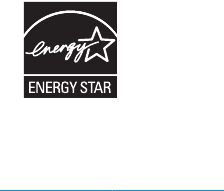HP LaserJet Pro MFP M225, M226 - Warranty and Legal Guide
Table Of Contents
- Service and support
- Environmental product stewardship program
- Protecting the environment
- Ozone production
- Power consumption
- Toner consumption
- Paper use
- Plastics
- HP LaserJet print supplies
- Paper
- Material restrictions
- Disposal of waste equipment by users (EU and India)
- Electronic hardware recycling
- Brazil hardware recycling information
- Chemical substances
- Product Power Data per European Union Commission Regulation 1275/2008
- Restriction on Hazardous Substances statement (India)
- Restriction on Hazardous Substances statement (Turkey)
- Restriction on Hazardous Substances statement (Ukraine)
- Substances Table (China)
- SEPA Ecolabel User Information (China)
- The regulation of the implementation on China energy label for printer, fax, and copier
- Material Safety Data Sheet (MSDS)
- EPEAT
- Substances Table (Taiwan)
- For more information
- Regulatory information
- Declaration of conformity
- Declaration of conformity
- Regulatory statements
- Additional statements for telecom (fax) products
- Additional statements for wireless products
- FCC compliance statement—United States
- Australia statement
- Brazil ANATEL statement
- Canadian statements
- Products with 5 GHz Operation Industry of Canada
- Exposure to Radio Frequency Radiation (Canada)
- European Union regulatory notice
- Notice for use in Japan
- Notice for use in Russia
- Mexico statement
- Taiwan statement
- Korean statement
- Vietnam Telecom wired/wireless marking for ICTQC Type approved products
- Index

Protecting the environment
HP is committed to providing quality products in an environmentally sound manner. This product has been
designed with several attributes to minimize impacts on our environment.
Ozone production
The airborne emissions of ozone for this product has been measured according to a generally recognized
method* and when these emissions data are applied to a “generic oice model exposure scenario”**, HP is able
to determine there is no appreciable amount of ozone generated during printing that exceeds any current indoor
air quality standards or guidelines.
* Test method for the determination of emissions from hardcopy devices with respect to awarding the
environmental label for oice devices with printing function; RAL-UZ 171 – BAM July, 2012
** Based on ozone concentration when printing 2 hours per day in a 32 cubic meter room with a ventilation rate
of 0.72 air changes per hour with HP printing supplies
Power consumption
Power usage drops signicantly while in Ready, Sleep, or O mode, which saves natural resources and saves
money without aecting the high performance of this product. HP printing and imaging equipment marked with
the ENERGY STAR
®
logo is qualied to the U.S. Environmental Protection Agency's ENERGY STAR specications for
imaging equipment. The following mark will appear on ENERGY STAR qualied imaging products:
Additional ENERGY STAR qualied imaging product model information is listed at:
www.hp.com/go/energystar
Toner consumption
EconoMode uses less toner, which might extend the life of the print cartridge. HP does not recommend the full-
time use of EconoMode. If EconoMode is used full-time, the toner supply might outlast the mechanical parts in
the print cartridge. If print quality begins to degrade and is no longer acceptable, consider replacing the print
cartridge.
24 Chapter 2 Environmental product stewardship program ENWW










